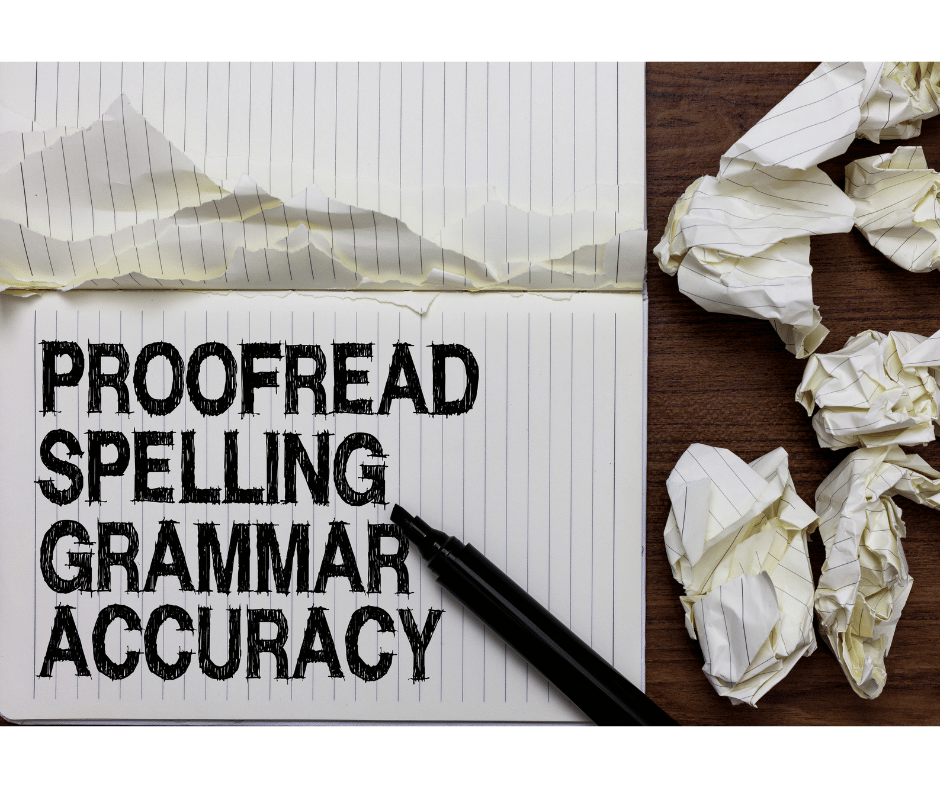No matter how captivating your story may be, your content will fall flat without a proper understanding of the mechanics of writing.
Writing mechanics serve as the backbone, providing structure and enhancing the clarity and readability of your text. Neglecting these essential tools can result in a lack of clear messaging, ultimately failing to engage and persuade your readers to read till the end.
But what are writing mechanics, and how can you ensure your piece abides by these rules?
Here is a detailed guide on the mechanics of writing and how you can implement them in your writing. Stick till the end if you want to transform the ordinary blocks of texts into extraordinary pieces of content.
Understanding Writing Mechanics
Writing mechanics refers to a set of rules everyone must follow while writing. These principles or fundamentals include grammar, sentence structure, punctuation, spelling, usage of words, capitalization, etc.
These provide the framework for clear and coherent communication, ensuring the ideas are conveyed accurately and the text is easy to read and understand.
Employing writing mechanics is essential to enhance the text’s clarity, coherence, and overall output.
11 Primary Mechanics of Writing You Should Be Aware Of
Writing mechanics is much more than following correct grammar. There are other particularities you need to be careful so that your reader gets the message you want to put across.
Following are the 11 key writing mechanics you need to master and apply to your text:
1. Parts of Speech
Parts of speech are different categories of words in a language. There are a total of eight parts of speech, such as nouns, pronouns, verbs, adverbs, adjectives, conjunction, proposition, and interjection.
It’s ok not to remember the definition of all, but you must know how to implement them in sentences.

Here is a very simple example of how parts of speech work in sentences:
- Noun: The cat is sleeping (Noun refers to a person, thing, object, place, etc.)
- Pronoun: It is sleeping (Pronoun is used instead of a noun. For instance, I have used “it” to refer to the “cat”)
- Verb: She runs every morning (Verbs show the action or state of the subject)
- Adverb: She sings loudly (a word or phrase that modifies the verb or adverb)
- Adjective: He has a beautiful car (Adjective adds more characteristics or provides information about the noun, noun speech, or pronoun)
- Conjunction: He likes both tea and coffee. (Conjunctions are words that connect or combine sentences, clauses, or words)
- Preposition: The book is on the table (These are words that support a noun or pronoun to show direction, location, time, or spatial relationship)
- Interjection: Wow, that’s amazing. (Interjections are words that show emotions or feelings)
2. Parts of Sentences
Parts of sentences refer to the correct formation of a sentence. But there is no hard and fast rule to follow here, allowing you to get creative with your sentences.
However, you need to ensure every line or sentence is harmonious and easy to understand.
The structure should be subject + verb + object. Some sentences also contain compliment + modifiers.
Example:
- Mary (subject) + baked (verb) + a cake (object)
- She (pronoun) + studied (verb) + in the library (modifer)
- Mary (noun) + is (verb) + happy (compliment)
3. Capitalization
As you may already know, capitalization refers to the uppercase letters to signify the beginning of a sentence and proper nouns (names of people, places, organizations, etc.). But apart from this standard use, capitalization highlights vital details in a sentence.
Even though improper capitalization does not change the meaning of a sentence, it may misalign the text. Hence, you must know when to use uppercase letters and when to avoid them.
Here are some simple examples demonstrating proper capitalization:
- Sentence: The sun is shining.
- Noun: John went to New York
- Title: I am reading Pride & Prejudice
4. Punctuation
Most writers do not pay enough attention to the proper placement of punctuation, but it’s necessary to provide clarity, structure, and emphasis in writing. Commas, periods, question marks, exclamation points, colons, semi-colons, hyphens, etc. are punctuations.

Here are some examples showing adequate use of punctuation:
- Question mark: How are you?
- Quotations: She said, “I won’t come to the party.”
- Colon: Please bring the following items: milk, bread, & eggs.
5. Sentence Errors
There are times when a sentence may sound fine but not correct, considering the writing mechanics. Some examples of sentence errors are faulty parallelism, run-on sentences, and dangling principles.
For example, the sentence, “Jose prefers jeans to wearing a suit,” is a sentence with faulty parallelism. The correct way to write the sentence is “Jose prefers wearing jeans to wearing a suit.”
6. Subject-Verb Agreement
Subject-verb agreement is a common mistake especially common in non-native speakers. This error occurs more while speaking than writing, but you must be careful to use the proper forms of verbs with the subject.
The subject and verb in a sentence need to march in terms of number (singular or plural). This kind of mistake is easily noticeable and may leave a bad impact; hence, make sure to proofread well before submitting any text.

A correct subject-verb agreement should look like this:
- Singular: The cat is sleeping.
- Plural: The cats are sleeping.
7. Abbreviations
Abbreviations are shortened forms of words or terms. It’s best to avoid abbreviations as much as possible since your readers may not be familiar with them.
If you still want to use abbreviations to avoid repetition, the best way to add them is to write the full term first and then continue with abbreviations.
For example, if your piece contains words like ANOVA, you must write the full term: Analysis of Variance at least once to clarify it.
8. Spelling
Bad spelling isn’t a reflection of a good writer. It shows a lack of knowledge and takes away readers’ interest from finishing your document.

Fortunately, nowadays, we have so many writing tools like Grammarly, ProWritingAid, Ginger, etc., that can easily detect spelling errors saving us from leaving a bad impression on readers.
9. Homophones, Homonyms, and Homographs
Homophones, homonyms, and homographs are words that can easily confuse any writer. Homophones are similar-sounding words with different meanings and spellings, such as “their” and “there.”
Homonyms are also quite similar to homophones. But these types of words have the same spelling, while the meaning differs. For example, the word “bat” refers to a type of mammal and also the solid wooden surface used to hit balls in games like cricket.
In contrast to homophones and homonyms, homographs are words with the same spelling but different pronunciations and meanings. For instance, the word “bow” means a weapon and bending forward.
10. Getting Rid of Redundancy
Redundancy is the repetition of words in your writing. While repetition does not impact the overall meaning or idea of the content, it can turn off a reader easily. To keep your audience engaged and improve readability, use synonyms or antonyms.
Redundancy also refers to the unnecessary stuffing of words. For example, instead of saying, “I saw it with my own eyes,” you can say, “I saw it.”
11. Run-on Sentences
Run-on sentences occur when two or more independent closes are improperly joined or if there is a lack of appropriate punctuation or conjunctions. The best way to avoid run-on sentences is to cut the sentences short or to put proper punctuation.
A simple example of a run-on sentence is: “I went to the store I bought some groceries.” The correct formation is: “I went to the store and bought some groceries.”
Related Reads:
- What is Direct Characterization
- Best Grammar Books
- Best Grammar Checker Free Tools
- Best Online Tools For Writers
Final Thoughts on Writing Mechanics
Mentioned above are the eleven essential writing mechanics. By incorporating these into our writing, we can enhance our written texts’ readability, coherence, and overall impact.
Whether you’re crafting an academic paper, a blog post, an email, or an essay, a solid grasp of these mechanics would convey your message more effectively.
It’s normal to make mistakes or be unsure of the writing mechanics. But thankfully, we have writing tools that make the process quicker and simpler. It’s best to run your text through Grammarly, ProWritingAid, Ginger, or similar tools to ensure your text is perfectly aligned.
FAQs: Writing Mechanics
Writing mechanics refers to the technical aspects of writing like grammar, punctuation, sentence structure, spelling, etc. In contrast, writing conventions refer to broader guidelines such as formatting and style. Writing convention focuses on context-specific rules for effective communication.
The primary stages of writing mechanics are: planning, drafting, revising, editing, proofreading, and finalizing.
Syntax is the arrangement of words in units like phrases, sentences, and clauses to create meaningful and grammatically correct text bodies.
The simple mechanics of writing a correct sentence is subject + verb + object. Make sure you’re careful about punctuation, spelling, capitalization, and other aspects.


